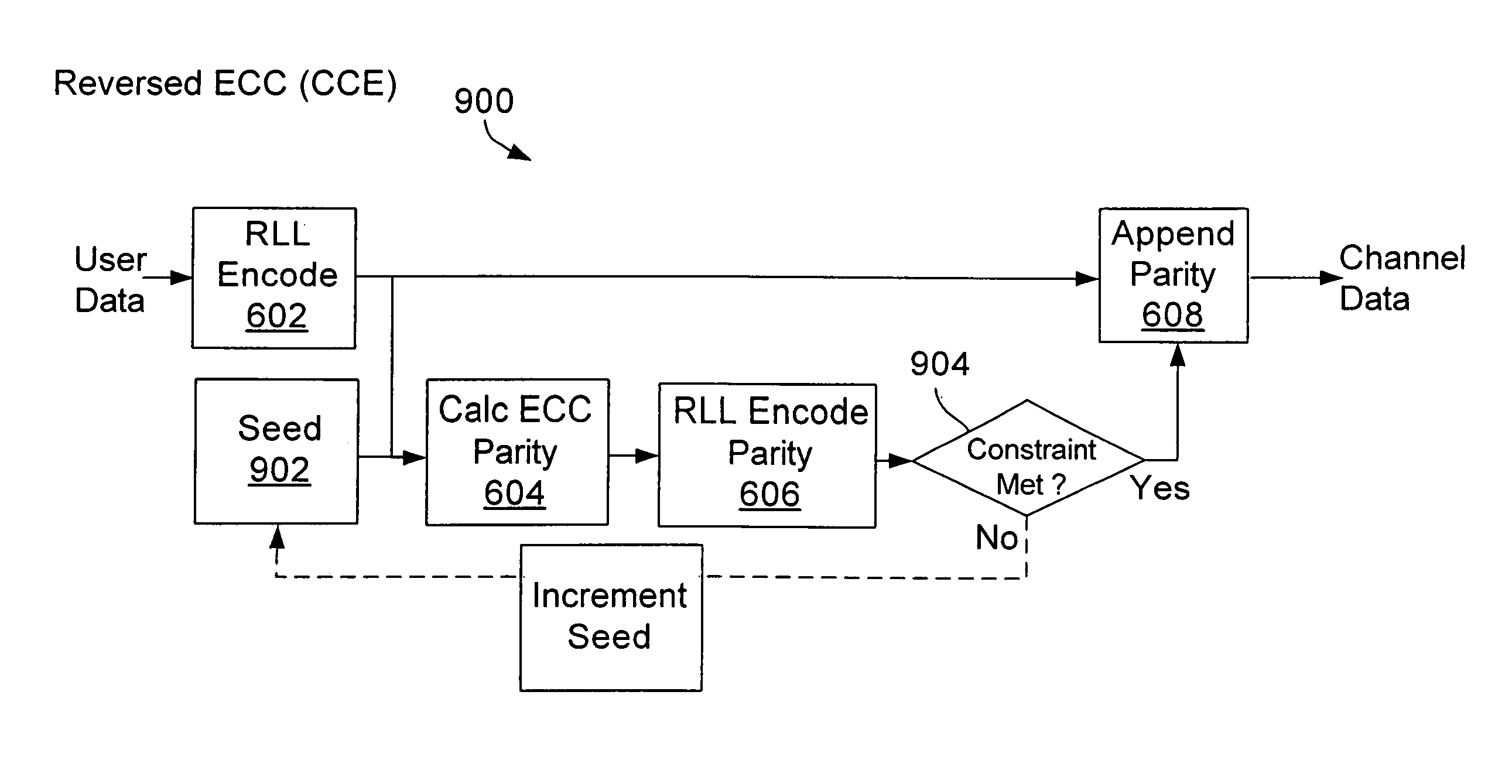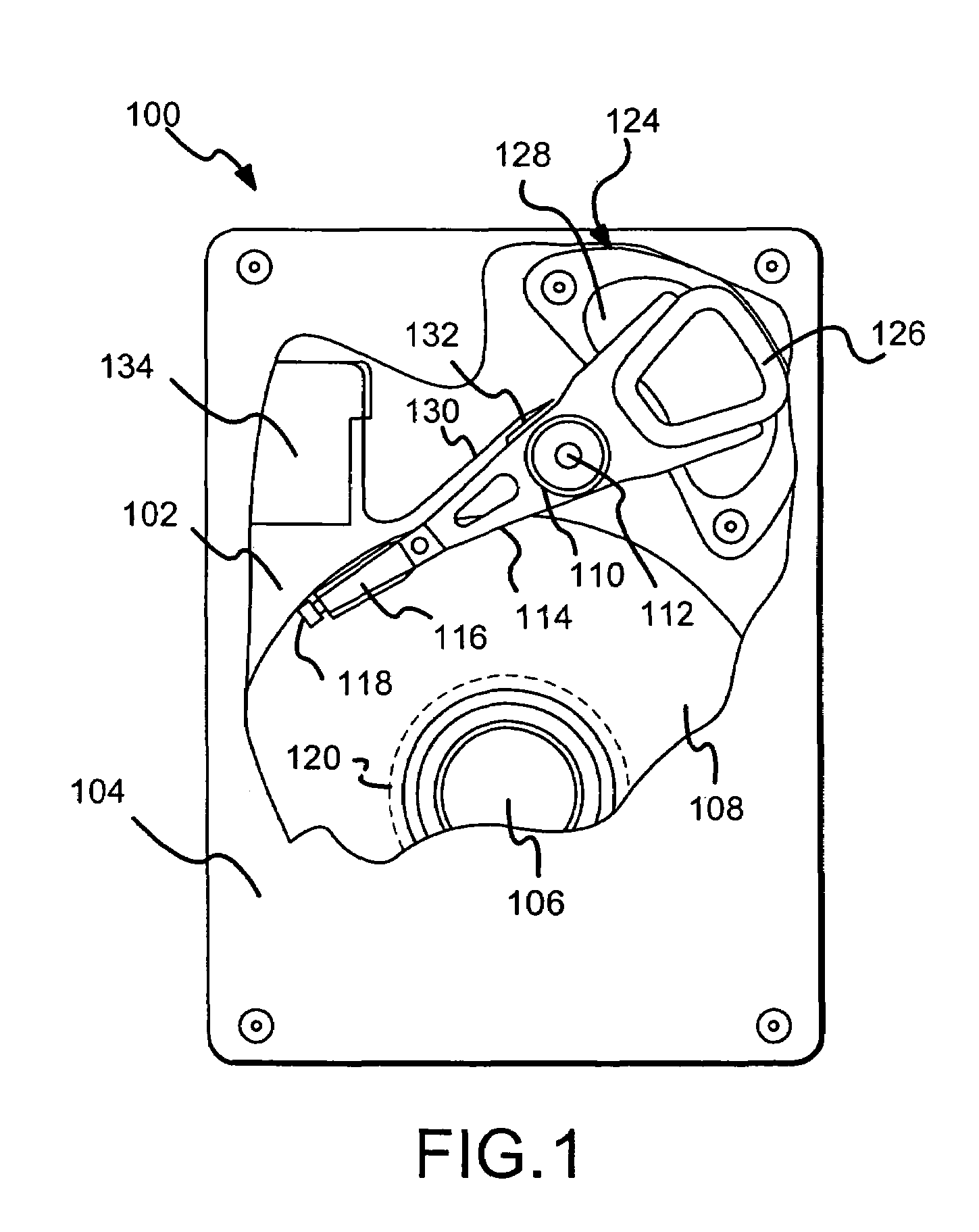Reverse error correction coding with run length limited constraint
a coding and run length technology, applied in the field of data communication and/or data storage, can solve the problems of signaling techniques, reduced code rate penalty, and more complex
- Summary
- Abstract
- Description
- Claims
- Application Information
AI Technical Summary
Benefits of technology
Problems solved by technology
Method used
Image
Examples
Embodiment Construction
[0018]Embodiments of the present invention are described with reference to a series of figures. Generally, embodiments of the present invention relate to systems and methods incorporated in a computing device for encoding and / or decoding data. More particularly, the systems and methods implement a Reverse ECC code without requiring a second RLL code. Still more particularly, the systems and methods introduce a seed into the encoded data such that the ECC parity meets an RLL constraint.
[0019]A disc drive 100 constructed in accordance with a preferred embodiment of the present invention is shown in FIG. 1. The disc drive 100 includes a baseplate 102 to which various components of the disc drive 100 are mounted. A top cover 104, shown partially cut away, cooperates with the baseplate 102 to form an internal, sealed environment for the disc drive in a conventional manner. The components include a spindle motor 106, which rotates one or more discs 108 at a constant high speed. Informatio...
PUM
 Login to View More
Login to View More Abstract
Description
Claims
Application Information
 Login to View More
Login to View More - R&D
- Intellectual Property
- Life Sciences
- Materials
- Tech Scout
- Unparalleled Data Quality
- Higher Quality Content
- 60% Fewer Hallucinations
Browse by: Latest US Patents, China's latest patents, Technical Efficacy Thesaurus, Application Domain, Technology Topic, Popular Technical Reports.
© 2025 PatSnap. All rights reserved.Legal|Privacy policy|Modern Slavery Act Transparency Statement|Sitemap|About US| Contact US: help@patsnap.com



